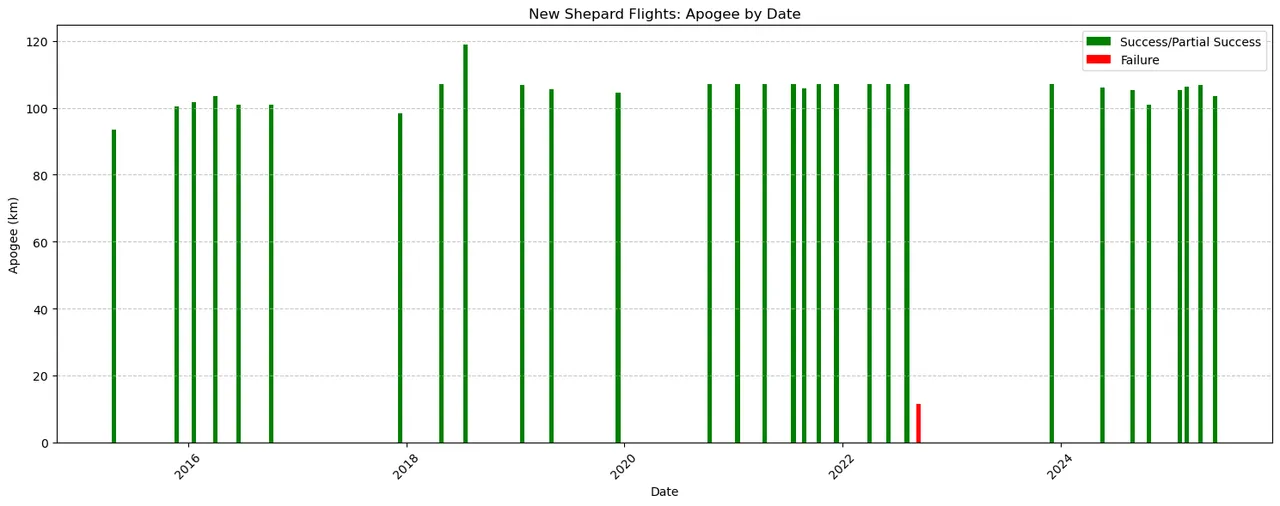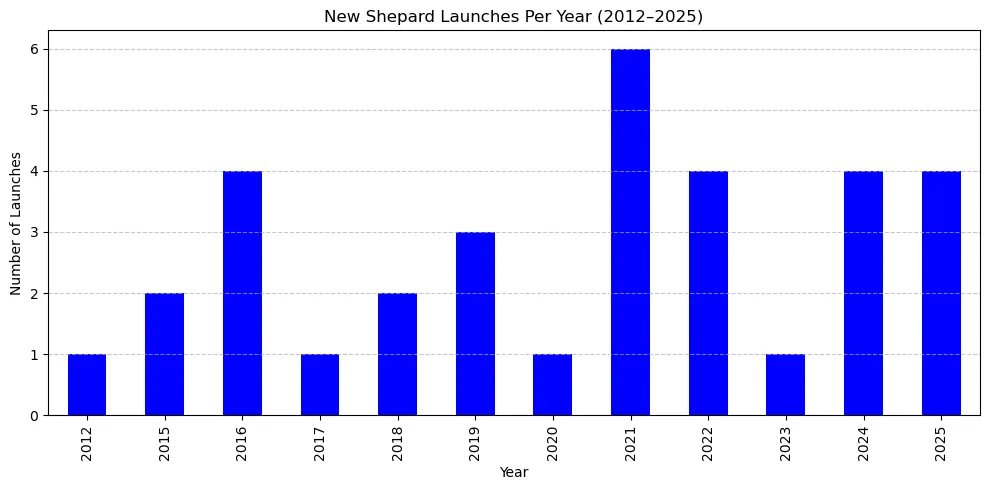Blue Origin has launched their New Shepard vehicle for the 4th time this year.
The most noted passenger may have been William Shatner in 2021, followed by Jeff Bezos, the founder of Blue Origin, also in 2021.
It is a reusable sub-orbital launch vehicle developed for space tourism and scientific payloads. Named after Alan Shepard, the first American in space and the fifth person to walk on the Moon, the vehicle supports vertical takeoff and landing. It is designed to carry humans and payloads above the Kármán line (100 km altitude).
The vehicle comprises a launch rocket and a crew capsule. The rocket is powered by a single BE-3PM engine, generating 490 kN of thrust at liftoff. The capsule returns to Earth using three parachutes and a solid rocket motor, while the rocket lands vertically on a landing pad.
Launch Apogee Analysis
The data includes 32 New Shepard flights from October 19, 2012, to May 31, 2025. Excluding the 2012 pad abort test (apogee 0.7 km), 31 flights are analyzed. Most flights achieved apogees between 100 km and 107 km, with the highest recorded at 118.8 km on July 18, 2018. The sole failure on September 12, 2022, reached an apogee of 11.4 km.

Launch Frequency by Year
The number of launches per year, based on the provided data, is as follows:
- 2012: 1 launch
- 2015: 2 launches
- 2016: 4 launches
- 2017: 1 launch
- 2018: 2 launches
- 2019: 3 launches
- 2020: 1 launch
- 2021: 5 launches
- 2022: 4 launches
- 2023: 1 launch
- 2024: 4 launches
- 2025: 4 launches

Key observations:
- 2016: 4 launches, primarily for testing rocket reusability.
- 2021: Peak frequency with 5 launches, including the first crewed missions.
- 2022: 4 launches, one of which was a failure.
- 2023: only 1 launch, likely due to recovery efforts following the 2022 failure.
- 2024: 4 launches, indicating a return to higher frequency.
- 2025: 4 launches by May, suggesting sustained activity.
? NS-32 Replay: Booster Touchdown! pic.twitter.com/o0RjbA3yCg
— Blue Origin (@blueorigin) May 31, 2025
Data source: Wikipedia – New Shepard